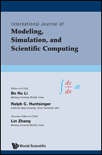
International Journal of Modeling Simulation and Scientific Computing
Scope & Guideline
Advancing the Frontiers of Simulation and Computing
Introduction
Aims and Scopes
- Modeling and Simulation Techniques:
The journal emphasizes novel modeling approaches, including mathematical modeling, agent-based modeling, and computational simulations that address real-world problems across different domains. - Interdisciplinary Applications:
Research published in the journal spans multiple fields such as engineering, healthcare, environmental science, and information technology, showcasing the versatility of modeling and simulation in addressing diverse challenges. - Emerging Technologies:
The journal highlights the integration of advanced technologies such as artificial intelligence, machine learning, and IoT into modeling and simulation frameworks, promoting innovative solutions and methodologies. - Data-Driven Approaches:
There is a significant focus on data-driven modeling techniques that leverage large datasets for predictive analytics, including the use of deep learning and statistical methods. - Collaborative and Distributed Systems:
Research on the modeling of collaborative systems, including cloud computing and edge computing, is a core area, reflecting the growing importance of these technologies in modern applications.
Trending and Emerging
- Artificial Intelligence and Machine Learning:
There is a significant increase in research integrating AI and machine learning techniques into modeling and simulation frameworks, particularly for predictive analytics and data-driven decision-making. - Digital Twin Technology:
The concept of digital twins is emerging as a vital area of research, with applications in real-time monitoring, control, and optimization of complex systems across various industries. - Epidemiological Modeling:
Given the recent global health challenges, there is a noticeable trend in the development of sophisticated models for disease spread, particularly relating to COVID-19 and other infectious diseases. - Cyber-Physical Systems:
Research focusing on cyber-physical systems, particularly in the context of IoT and smart environments, is gaining momentum as industries seek to enhance connectivity and automation. - Sustainability and Environmental Modeling:
There is a growing emphasis on modeling approaches that address sustainability and environmental concerns, indicating a shift towards research that supports ecological and resource management.
Declining or Waning
- Traditional Statistical Methods:
There has been a noticeable decrease in the publication of papers focusing on classical statistical modeling techniques, as newer, more complex methodologies such as machine learning and AI have gained traction. - Basic Mathematical Models:
Papers centered solely on fundamental mathematical models, without integration of computational techniques or real-world applications, are becoming less common, indicating a shift towards more applied and complex modeling. - Single-Domain Studies:
Research that focuses narrowly on a single domain without interdisciplinary integration is less frequently published, as the trend moves towards studies that incorporate multiple fields and collaborative approaches. - Static Models:
There is a declining interest in static modeling approaches as dynamic and adaptive models that can capture changing conditions and interactions are increasingly favored. - Simplistic Simulation Techniques:
The journal is moving away from simplistic simulation methodologies that do not incorporate advanced computational techniques or real-world complexities, reflecting a demand for more sophisticated simulations.
Similar Journals

Quantitative Biology
Bridging Mathematics and Biology for Innovative DiscoveriesQuantitative Biology is a prestigious journal published by WILEY, focusing on the interdisciplinary study of quantitative approaches in the biological sciences. With an ISSN of 2095-4689 and an E-ISSN of 2095-4697, this journal has established itself as a critical platform for researchers exploring complex biological systems through mathematical and computational methodologies. Operating out of China, Quantitative Biology significantly contributes to its field, holding a Q2 ranking in various categories, including Applied Mathematics and Biochemistry, Genetics and Molecular Biology, according to the latest Scopus rankings. These rankings reflect the journal's commitment to publishing high-quality research that employs advanced modeling and simulation techniques. The journal's impact is evident with its position in the 84th percentile for Applied Mathematics, indicating its relevance and growth in a competitive academic landscape. Although it does not currently operate under an Open Access model, the journal is pivotal for professionals and students alike, aiming to bridge the gap between mathematical theories and biological applications. Researchers are encouraged to submit their innovative findings and engage with the vibrant community dedicated to advancing the quantitative understanding of biological phenomena.

NEW GENERATION COMPUTING
Empowering Innovation in Computer ScienceNEW GENERATION COMPUTING is a prominent academic journal published by SPRINGER, specializing in the dynamic fields of Computer Networks, Hardware and Architecture, Software Engineering, and Theoretical Computer Science. With a commitment to disseminating high-quality research since its inception in 1983 and extending its coverage to 2024, this journal occupies a vital role in advancing knowledge and innovation within these critical domains. Holding prestigious Q2 rankings in Computer Networks and Communications, Hardware and Architecture, and Software, as well as a Q3 ranking in Theoretical Computer Science for 2023, NEW GENERATION COMPUTING attracts significant contributions from scholars and professionals around the globe. Researchers will find its rigorous peer-review process ensures the publication of impactful studies, while students gain access to cutting-edge research that shapes contemporary computing practices. Though it does not offer open access, the journal remains an invaluable resource in the academic community, fostering collaboration and dialogue among experts aiming to push the boundaries of technology.

International Journal on Information Technologies and Security
Bridging Disciplines in Tech and SecurityInternational Journal on Information Technologies and Security, published by UNION SCIENTISTS BULGARIA, is a pivotal interdisciplinary journal that explores the rapidly evolving fields of information technology and security. With a robust ISSN of 1313-8251, this journal serves as a platform for researchers, professionals, and students to disseminate their findings and innovations in cybersecurity, data protection, and IT system integrity. The journal's commitment to open access enhances accessibility, ensuring that pivotal research reaches a broader audience, encouraging collaboration and advancement in these critical areas. As an invaluable resource for those engaged in the study and application of information security measures, the International Journal on Information Technologies and Security plays an essential role in shaping the discourse and driving forward the knowledge necessary to tackle today’s technological challenges.
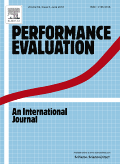
PERFORMANCE EVALUATION
Pioneering Research for Enhanced Performance SolutionsPERFORMANCE EVALUATION, published by ELSEVIER, is a prestigious journal that serves as a critical resource for researchers and professionals in the fields of Computer Networks and Communications, Hardware and Architecture, Modeling and Simulation, and Software. With its ISSN 0166-5316 and E-ISSN 1872-745X, this journal is recognized for its contribution to the advancement of performance assessment methodologies and empirical research. Holding a Q3 quartile ranking across multiple categories in 2023, PERFORMANCE EVALUATION is positioned as a valuable platform for disseminating high-quality studies that explore complex performance issues and innovative solutions. Operating from its base in the Netherlands, this journal emphasizes rigorous peer-review standards and enhances its relevance within the academic community by addressing crucial challenges and trends in technology. Stakeholders can access the wealth of knowledge published from 1981 through 2024 by exploring this journal, making it an essential tool for practitioners and scholars aiming to stay at the forefront of computer science research.
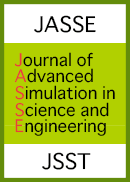
Journal of Advanced Simulation in Science and Engineering
Empowering Collaboration through Open Access ResearchJournal of Advanced Simulation in Science and Engineering, published by the Japan Society for Simulation Technology (JSST), stands as a pivotal platform in the dynamic field of simulation technology, focusing on cutting-edge research and applications in science and engineering. With the ISSN and E-ISSN of 2188-5303, this journal aims to disseminate high-quality research that drives innovation and enhances understanding among practitioners, academics, and students alike. As an essential resource for those engaged in simulation methodologies, it explores a wide range of topics, including but not limited to computational modeling, virtual simulations, and their applications across various engineering disciplines. The journal is indexed in prestigious databases, aiming for a strong impact factor that reflects its commitment to scholarly excellence and relevance. Its open access policy further facilitates wider dissemination and accessibility of research findings, thereby fostering greater collaboration and advancement in the field. Researchers and professionals are encouraged to contribute their findings and insights, establishing the Journal of Advanced Simulation in Science and Engineering as a leading authority in advancing simulation technologies for future applications.
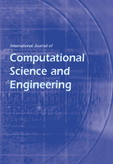
International Journal of Computational Science and Engineering
Shaping Tomorrow's Technologies Through Computational ResearchThe International Journal of Computational Science and Engineering, published by InderScience Enterprises Ltd, is a premier platform dedicated to the interdisciplinary field of computational science and engineering. With an ISSN of 1742-7185 and an E-ISSN of 1742-7193, the journal has been serving the academic community since its establishment in 2005 and will continue to do so until 2024. Notably categorized in the Q3 quartile for various domains, including Computational Mathematics, Software, and Hardware and Architecture, it holds respectable rankings in Scopus, evidencing its importance in advancing research and practice. While the journal is not open-access, it offers subscription options that ensure wide dissemination among researchers, professionals, and students. The journal aims to publish high-quality original research articles, survey papers, and case studies that contribute to the theoretical and practical aspects of computational techniques and methodologies. In a rapidly evolving digital landscape, this journal is a valuable resource for those seeking to push the boundaries of knowledge in computational science.

JOURNAL OF COMPUTING AND INFORMATION SCIENCE IN ENGINEERING
Exploring Innovations at the Intersection of Science and TechnologyWelcome to the JOURNAL OF COMPUTING AND INFORMATION SCIENCE IN ENGINEERING, a premier publication from ASME that focuses on the dynamic intersection of computing and engineering disciplines. With an ISSN of 1530-9827 and E-ISSN 1944-7078, this journal serves as a critical platform for disseminating innovative research and advancements in areas such as Computer Graphics, Computer-Aided Design, Software Engineering, and Industrial Manufacturing. The journal spans from 2001 to 2024 and has been recognized for its excellence, boasting impressive Scopus rankings including Q1 in Industrial and Manufacturing Engineering and Q2 in both Computer Graphics and Computer Science Applications. It offers a unique opportunity for researchers, professionals, and students to engage with high-impact studies and present their contributions to a diverse audience. As a member of the esteemed ASME family, this journal promotes open dialogue and fosters the growth of knowledge in technical fields, while emphasizing practical applications and interdisciplinary collaboration. Join us in exploring the forefront of computing and engineering through rigorous research and insightful articles that drive innovation and progress.
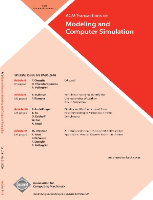
ACM Transactions on Modeling and Computer Simulation
Elevating Knowledge in the Realm of Simulation Methodologies.ACM Transactions on Modeling and Computer Simulation, published by the Association for Computing Machinery, stands as a pivotal journal in the fields of Computer Science Applications and Modeling and Simulation. With an ISSN of 1049-3301 and an E-ISSN of 1558-1195, this journal has been at the forefront of disseminating cutting-edge research since its inception in 1991. The journal exhibits a commendable impact within its categories, ranking in the Q3 quartile for both Computer Science Applications and Modeling and Simulation, reflecting a robust contribution to scholarly discourse. While it currently operates under a traditional access model, the wealth of empirical studies published here serves as a critical knowledge base for researchers, professionals, and students seeking to drive innovation and enhance their analytical capabilities in model development and computational techniques. As it continues to converge through 2024, the ACM Transactions on Modeling and Computer Simulation remains essential for anyone aiming to advance their understanding and application of simulation methodologies in computational science.

JOURNAL OF SUPERCOMPUTING
Pioneering Insights in High-Performance ComputingJOURNAL OF SUPERCOMPUTING is a premier academic journal published by SPRINGER, situated in the Netherlands, that has made significant contributions to the fields of computer science, particularly in hardware and architecture, information systems, software, and theoretical computer science. With a robust publication history spanning from 1987 to 2024, this journal has cultivated a strong reputation, evidenced by its Category Quartiles ranking in the Q2 category across multiple relevant domains in 2023. The journal's Scopus rankings further underscore its influence, boasting a 78th percentile in mathematics and theoretical computer science, revealing the high quality of research disseminated within its pages. As vital discourse unfolds in the realm of supercomputing—where innovative techniques and technologies rapidly evolve—this journal serves as a crucial platform for researchers, professionals, and students to explore cutting-edge studies and build upon the foundations of knowledge in this dynamic field.

SIAM JOURNAL ON SCIENTIFIC COMPUTING
Advancing the Frontiers of Computational ScienceSIAM Journal on Scientific Computing is a premier journal published by SIAM Publications, focusing on the interdisciplinary domain of scientific computing. With a significant standing in the academic community, this journal boasts a 2023 Q1 ranking in both Applied Mathematics and Computational Mathematics, positioning it among the top-tier publications in these fields. The journal aims to disseminate high-quality research that applies computational methods to solve scientific and engineering problems, fostering advancements in numerical analysis, algorithms, and software development. Researchers and professionals can greatly benefit from the journal's rigorous peer-review process and its reputation for publishing cutting-edge studies. Though it is not an open-access journal, subscribing institutions and individual subscribers gain access to a wealth of knowledge tailored for those seeking to enhance their expertise in scientific computation. With its established history since 1996 and continuing to publish until 2024, the SIAM Journal on Scientific Computing remains an essential resource for students, researchers, and professionals dedicated to pushing the boundaries of this dynamic field.